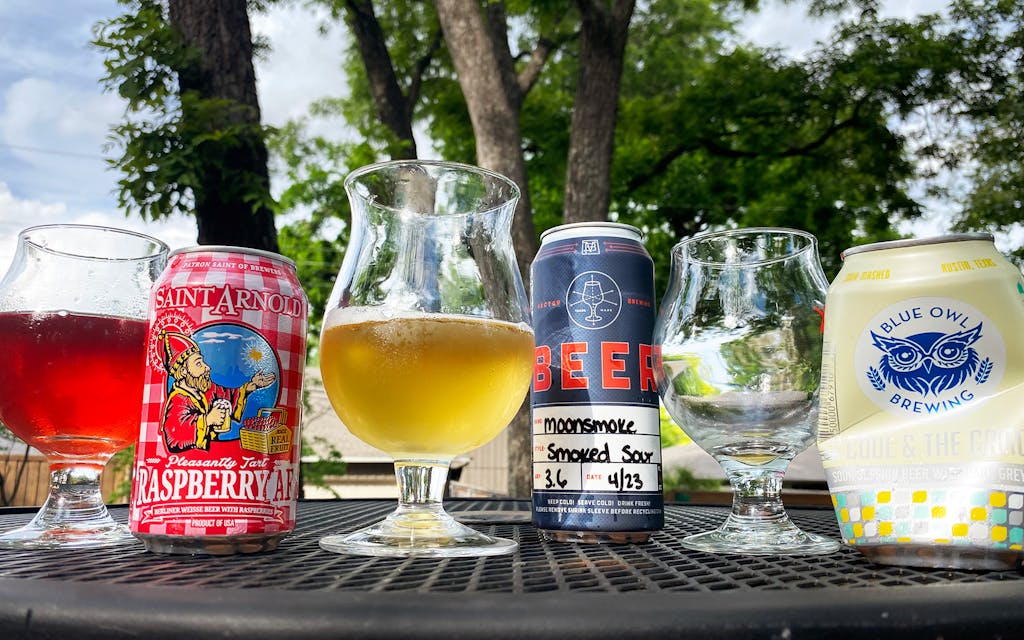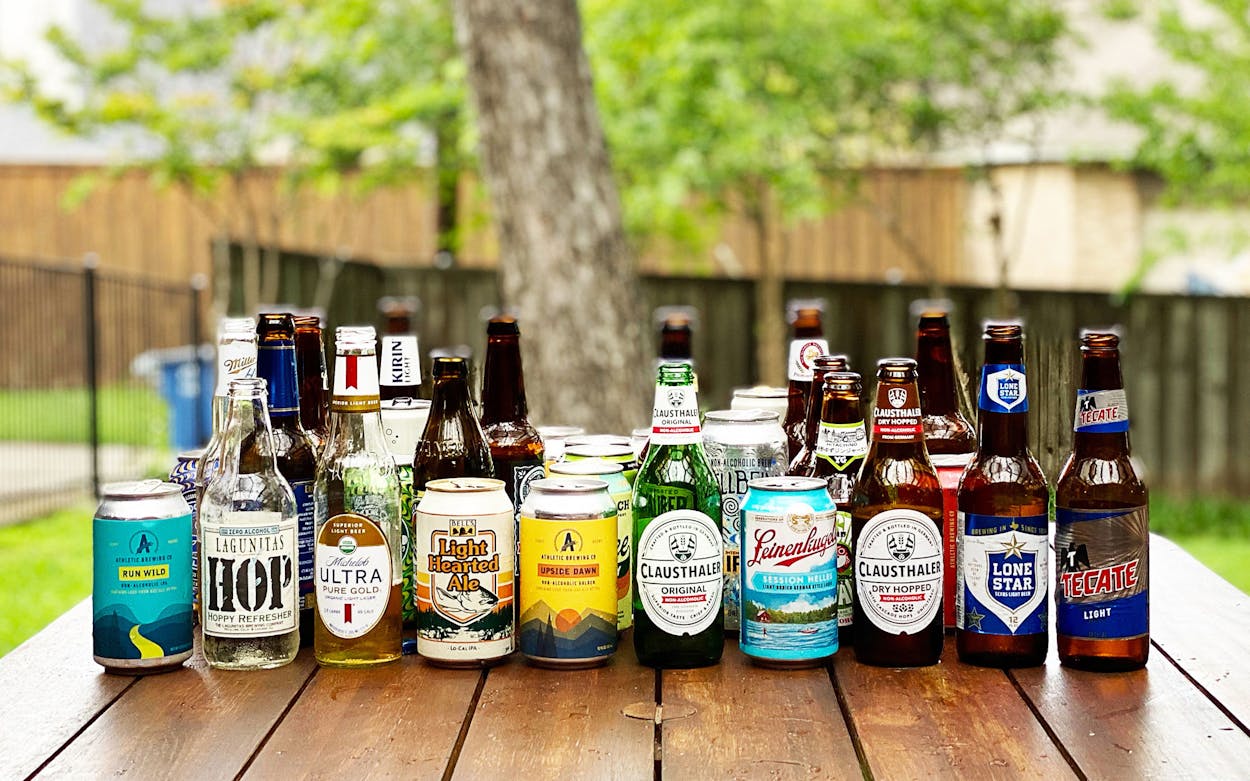Aaron Franklin’s first-ever brisket-smoking tutorial, posted on his BBQ with Franklin YouTube channel in 2012, has been viewed over four million times. In the video, Franklin gets the brisket in the smoker and closes the lid, then reminds the audience it will be a long time before the brisket is done. “How long is a long time?” he asks. “Long enough to drink a beer.” I’m not saying Franklin was a trendsetter by suggesting a relationship between smoking meat and drinking beer; plenty of backyard cooks—and four million barbecue YouTube fans—will joke that brisket’s extensive smoke time is really just an excuse to spend half a day downing beers. That’s fine, unless you want to end up with a good brisket.
Maybe you’ve got a stash of double IPAs that you were saving, or those imperial stouts you bought last November are taking up too much room in the fridge. One beer leads to another, and next thing you know, you can’t remember the last time you checked the temperature gauge. I’ve been there. By the end of the cook, when the chef should be at his sharpest, those heavy beers have turned into a heavy buzz. Your judgment gets clouded and impatience sets in. After hours of effort and attention, the booze makes you sloppy. I’m here to tell you to lighten up when it comes to your beer of choice.
In this modern age of craft beer, your favorite pint might clock in at twice the alcohol by volume (ABV) percentage of your father’s light beer. It’s easier than ever to get buzzed from a few beers, so the most responsible course of action is for a backyard cook to cut him- or herself off after a drink or two. But I know that’s not always a realistic expectation. Instead, I suggest you pull back the throttle, and stock your cooler with these Texas Monthly–tested low-ABV or nonalcoholic beers. With these options, you can keep a cold beer in your hand all day and still remain attentive enough to put a log on the fire when the smoker’s temperature dips, and careful enough to let that brisket ride until it’s tender enough. To create this list, I and a fellow beer lover, we’ll call him Chris, tasted forty beers, all of them under 4.0 percent ABV. To put that in perspective, Sierra Nevada Pale Ale has 5.6 ABV, Budweiser has 5 percent ABV, Lone Star has 4.5, and Shiner has 4.4.
We chose to stay below 4.0 percent ABV based on some American beer history. You may remember 3.2 beer from days gone by, which is the highest alcohol by weight (ABW) beer that Texans aged eighteen to twenty could legally drink in the 1970s and ’80s. That number goes all the way back to the Beer and Wine Revenue Act of 1933, which was signed just before the repeal of Prohibition to allow the sale of 3.2 percent ABW beer. At the time, beer that low in alcohol was categorized as “nonintoxicating.” Beer that is 3.2 percent ABW is about 4.0 percent ABV, so for Texans of a certain age, drinking beer below 4.0 percent ABV just might make them feel eighteen again. Based on ABV alone, you could drink two cans of the number-one beer on our list for every can of the same brewery’s most popular IPA.
The lineup also includes nonalcoholic beers (defined as beers under 0.5 percent ABV) and a few beer-inspired beverages. We judged them all against our own metric, the Topo Chico Line (TCL). If I were trading my beer of choice for a lighter beverage, would I rather drink this beer or a sparkling water? Only nineteen of the forty made it above the TCL, and we ranked those from first to nineteenth place. Here are the results:
- Saint Arnold Raspberry AF (3.6% ABV), Houston: Pair it with barbecue for a light, effervescent counterpoint to hearty smoked meats. With lots of raspberry flavor, and not too much sourness, it’s also a great all day drinker on its own.
- Vector Brewing Moonsmoke (3.6% ABV), Dallas: This smoked sour beer is a lichtenhainer, a German style of beer not often found in the U.S. The smoke is most evident on the nose, but once you take a sip, it’s tempered by a subtle sour flavor.
- Blue Owl Brewing Cool & The Gang (3.2% ABV), Austin: Steeped with Earl Grey tea and combined with notes of lemon, this sour beer drinks like an Arnold Palmer.

We interrupt these rankings to inform you that all three beers above are of the sour variety. If you like sour beers, this will be welcome news. If you don’t like sour beers, your rankings begin below:
- Tecate Light (3.9% ABV), Mexico: If you’ve had a Mexican-style lager, this will be a familiar flavor. I’d prefer it over the trio of Coors Light, Miller Lite, and Bud Light, all of which clock in at 4.2% ABV.
- Lone Star Light (3.85% ABV), Austin/Fort Worth: This light version of the National Beer of Texas still holds up, with notes of malt and some solid beer flavor.
- Clausthaler Dry Hopped (NA), Germany: Many of the nonalcoholic beers lacked boldness, but this one had an impressive combination of sweet, malty, and hoppy flavor.
- Leinenkugel’s Session Helles (3.4% ABV), Wisconsin: A simple light beer with a crisp finish.
- Clausthaler Original (NA), Germany: Tastes very much like a generic European lager, which is an accomplishment for an NA beer.
- Athletic Brewing Co. Upside Dawn Golden Ale (NA), Connecticut: Even without alcohol, the body and depth of flavor here is impressive, especially when compared to other light beers.
- Bell’s Light Hearted Ale (3.7% ABV), Michigan: Session IPAs are now a popular brew, usually with fewer hops than a regular IPA. This one is even lighter, so this might be a good entry point for IPA skeptics.
- Michelob Ultra Pure Gold (3.8% ABV), Missouri: An inoffensive light beer, which is a compliment considering all the offensive ones we tasted.
- Lagunitas Hoppy Refresher (NA), California: More of a flavored sparkling water, this zero-calorie drink still has some sweet notes and tastes of hops.
- Athletic Brewing Co. Run Wild IPA (NA), Connecticut: The was our favorite of the NA IPAs, but it was still a bit thin.
- Altstadt Light (3.5% ABV), Fredericksburg: I wanted this Texas beer to score higher, but it’s so light it didn’t have any flavor to balance out the bitterness.
- Lagunitas IPNA (NA), California: Much like the Athletic Run Wild, but with less body.
- Wellbeing Intentional IPA (NA), Missouri: See above.
- Live Oak Brewing Grodziskie (3.0% ABV), Austin: The smokiness could turn people off, but this is an old style of light Polish beer made with oak-smoked wheat malt.
- Hitachino Nest Yuzu Ginger Non Ale (NA), Japan: While this was refreshing, with flavors like yuzu and ginger on the label, we were hoping for a bolder flavor.
- Karbach Free & Easy IPA (NA), Houston: This one barely squeaked in above the Topo Chico Line, and only passes if drunk from the can. If poured into a glass, you’ll catch a whiff of dumpster juice on hot pavement.
Over half the beers we tasted fell below the Topo Chico Line, with flavors ranging from oddly soapy to reminiscent of Lucky Charms marshmallows. These are the beers, in alphabetical order, we would rather replace with water if given the option: Athletic Brewing Co. Cerveza Atletica, Athletic Brewing Co. Free Wave Hazy IPA, Athletic Brewing Co. Smooth Ascent Coffee Stout, Brooklyn Special Effects Hoppy Amber, Brooklyn Special Effects IPA, Colima Cayaco, Coors Edge, Dogfish Head Lemon Quest, Erdinger Weissbier, Grüvi Non-Alcoholic Stout, Hairless Dog NA Black Ale, Hairless Dog NA IPA, Kaliber NA, Kirin Light, Miller64, New Belgium The Purist, Partake NA Stout, Paulaner Weizen-Radler NA, Texas Select NA, Wellbeing Hellraiser Dark Amber, Wellbeing Heavenly Body Golden Wheat.
If you have a favorite NA beer that we may have missed, or a great story about how beer ruined your barbecue, please share in the comments below.








